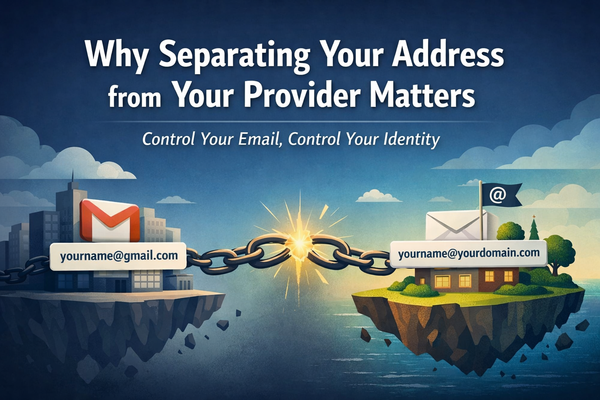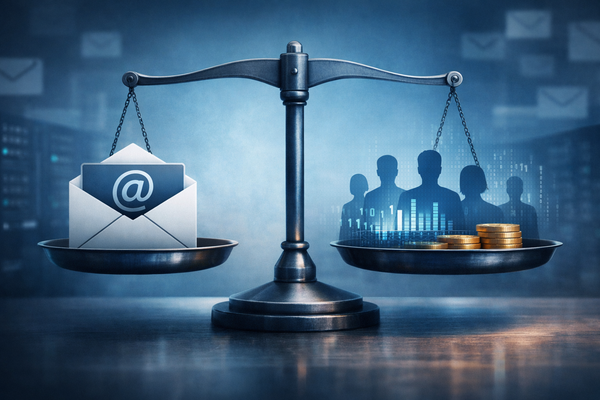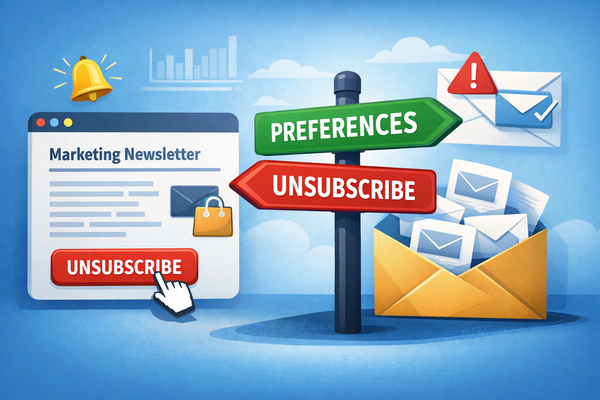The History of Email: From ARPANET to the Modern Inbox
A clear overview of how email evolved from early computer networks into one of the world’s most widely used communication tools.
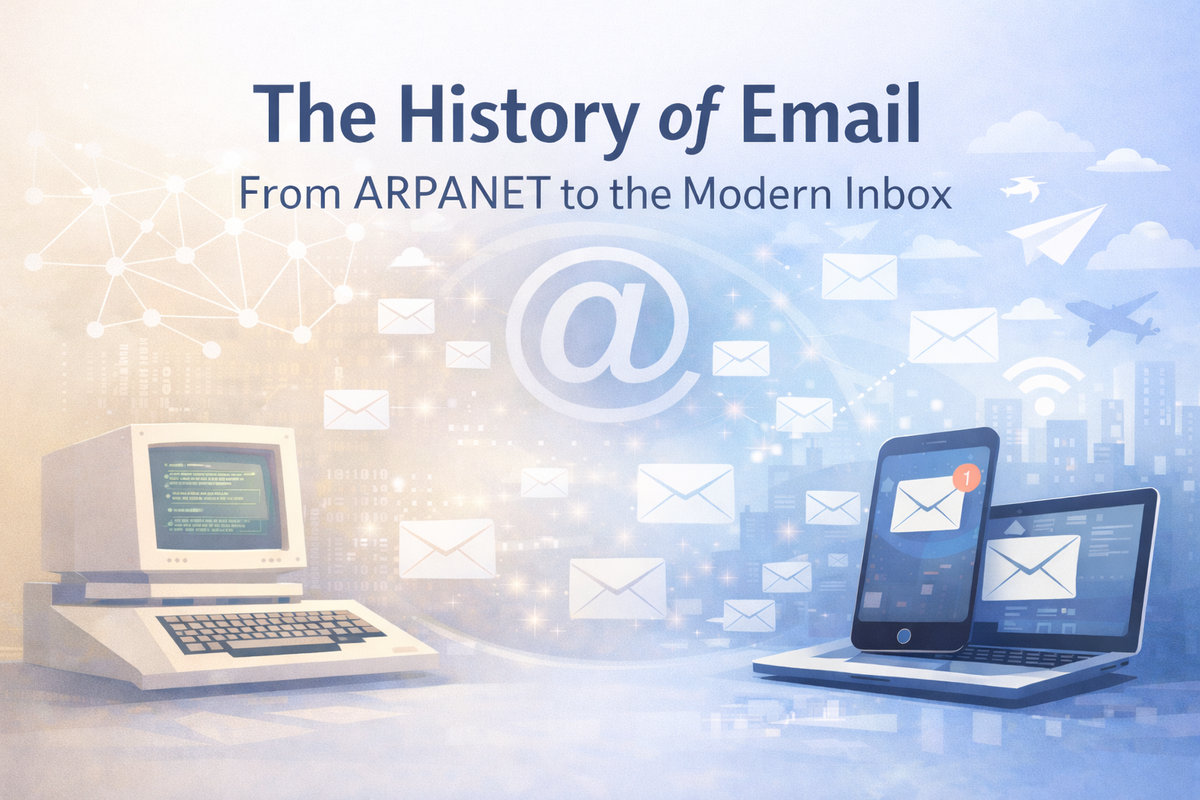
Email is so familiar today that it’s easy to forget how revolutionary it once was when it first appeared. Long before instant messaging, social media, or collaboration tools, email became one of the first widely adopted ways for people to communicate digitally across networks.
This article explores how email began, how it evolved, and why it remains relevant decades after its creation.
The origins of email
Email’s roots lie in the early days of networked computing. In the late 1960s and early 1970s, researchers working on ARPANET, a precursor to the modern internet, were focused on sharing information between computers.
Early messaging systems allowed users to leave notes for others on the same machine. The breakthrough came when messages could be sent between computers on a network rather than stored locally.
In 1971, Ray Tomlinson sent the first network email and introduced the @ symbol to separate the user name from the host computer. This simple convention is still used today.
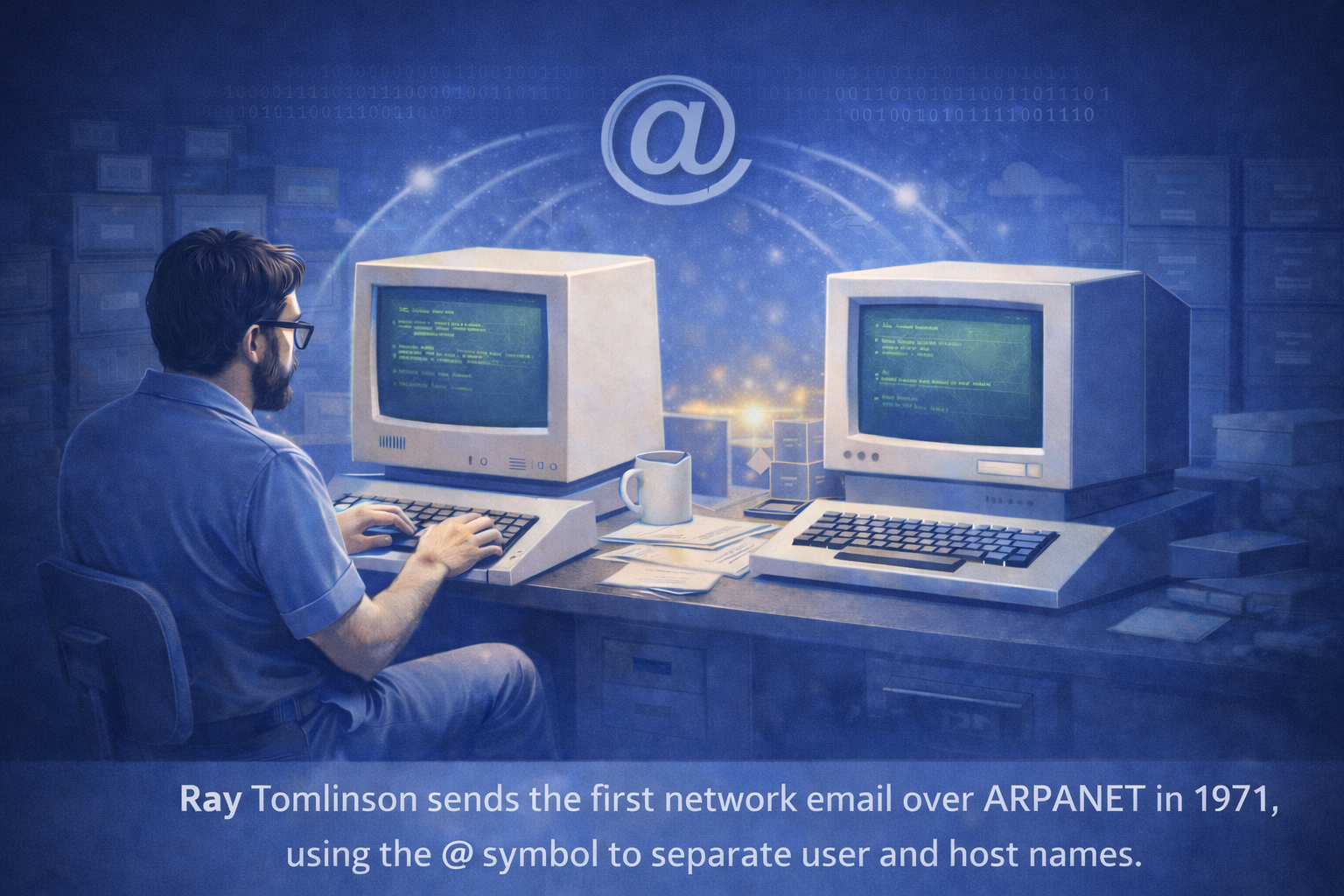
Email spreads beyond research networks
Throughout the 1970s and 1980s, email grew alongside academic and research networks. Universities and government organisations adopted it as a faster alternative to memos and postal mail.
As networks expanded, basic standards emerged to ensure messages could be exchanged reliably between different systems. These early protocols laid the groundwork for email’s global scalability.
By the time personal computers became more common, email was already established as a practical and efficient communication tool.
The rise of consumer email
The 1990s marked a turning point. As the internet became publicly accessible, email moved from specialist environments into everyday life. Internet service providers began offering personal email accounts, and web-based services like AOL Mail, Hotmail, and later Yahoo! Mail made it possible to check messages from any computer with a browser — no special software required. For many people, signing up for an email address on one of these platforms became their first real step onto the internet.
That shift also changed the economics of email — introducing the trade-offs between free, ad-funded services and paid providers that still shape how inboxes work today.
Read more: Free vs Paid Email: What You’re Really Paying With
Email addresses quickly became a digital identity, used for:
- Personal communication
- Online registrations
- Work correspondence
- Mailing lists and newsletters
This period cemented email’s role as a universal communication standard.
Standardisation and global interoperability
One of email’s greatest strengths is that it isn’t owned by a single company. Instead, it operates on open standards that allow different providers and systems to communicate with one another.
Protocols such as SMTP, POP, and IMAP made it possible for email to work across networks, organisations, and countries without requiring users to be on the same platform.
This openness helped email scale globally and remain resilient as technology changed around it.
Spam, filtering, and the arms race
As email adoption grew, so did abuse. Unsolicited messages, scams, and malicious attachments became increasingly common.
In response, email providers developed filtering systems to block spam and identify harmful content. Over time, this led to a constant arms race between senders trying to bypass filters and providers trying to protect users.
Despite these challenges, email continued to adapt rather than disappear.
Email in the age of instant messaging and collaboration tools
By the 2000s and 2010s, new communication tools emerged that prioritised speed and informality. Messaging apps, collaboration platforms, and social networks changed how people interacted online.
Rather than replacing email, these tools took over specific use cases:
- Quick conversations
- Real-time collaboration
- Informal group chats
Email shifted towards roles that benefit from structure, clarity, and permanence. It became less about constant conversation and more about communication that needs a record.
✉️ Get thoughtful writing on email & digital life
I publish clear explainers like this, plus email provider reviews, privacy-first tools, and practical inbox habits. No spam — just useful writing.
Privacy, security, and modern email
As awareness of online privacy grew, email once again evolved — and questions about who pays for email, how providers are incentivised, and what users give up in exchange became harder to ignore.
Modern email services now focus on:
- Protecting message content
- Reducing tracking and profiling
- Securing accounts against takeover
- Giving users greater control over their data
These developments reflect changing expectations rather than a decline in email itself.
One of the most practical responses to this history is separating your email address from the provider itself — so you can change services without changing identity.
Why email has endured
Email has survived for over fifty years because it solves a fundamental problem: how to communicate reliably across systems, organisations, and borders.
Its strengths include:
- Universality
- Decentralisation
- Asynchronous communication
- Clear records and accountability
While its role has changed, its core value has not.
The future of email
Email is unlikely to disappear. Instead, it will continue to evolve alongside other communication tools.
Future developments are likely to focus on:
- Stronger security and authentication
- Improved spam and phishing protection
- Better organisation and usability
- Greater respect for user privacy
Rather than being replaced, email is increasingly complemented by other platforms that handle different kinds of communication.
Frequently Asked Questions
When was email invented?
Email emerged in the early 1970s as part of ARPANET, a research network that later evolved into the modern internet. The first network email was sent in 1971.
Who sent the first email?
The first network email was sent by computer engineer Ray Tomlinson in 1971. He also introduced the use of the @ symbol to separate the user name from the destination computer — a convention still used today.
Why did email become so widely adopted?
Email solved a fundamental problem: reliable communication across computers without requiring both parties to be online at the same time. Its simplicity, speed, and ability to work across different systems helped it spread quickly through universities, businesses, and eventually the public internet.
Why hasn’t email been replaced by messaging apps?
Messaging apps prioritise speed and real-time conversation, while email is designed for structured, asynchronous communication. Email works better when clarity, records, and accountability matter, which is why it continues to coexist with — rather than be replaced by — newer platforms.
Is email still relevant today?
Yes. Email remains central to digital life because it functions as a universal identity, works across organisations and platforms, and provides a reliable record of communication. Most online services still rely on email for account access, notifications, and verification.
How has email changed over time?
Email has evolved from simple text messages into feature-rich platforms that focus on security, spam protection, organisation, and privacy. While its role has shifted, its core purpose — reliable communication — has remained the same.
Why was email designed to be decentralised?
Email was designed to work across independent networks rather than a single platform. This decentralised structure allowed different organisations and systems to communicate without relying on one central provider, which is why email remains resilient and interoperable today.
Final thoughts
The history of email is a story of adaptation rather than obsolescence. From its origins on research networks to its role as a global communication standard, email has continually adjusted to new technologies and expectations.
Understanding where email came from helps explain why it remains so deeply embedded in digital life — and why it’s still here today.
